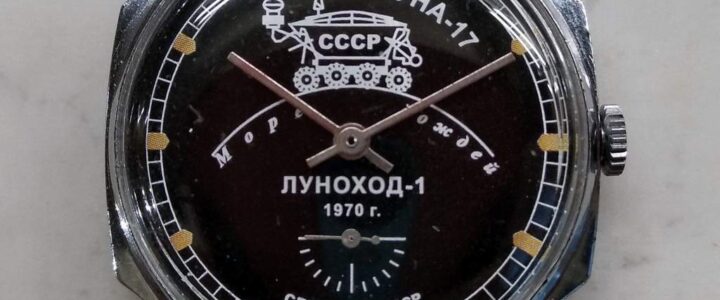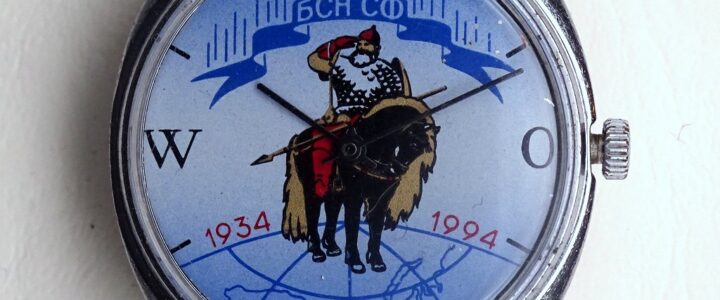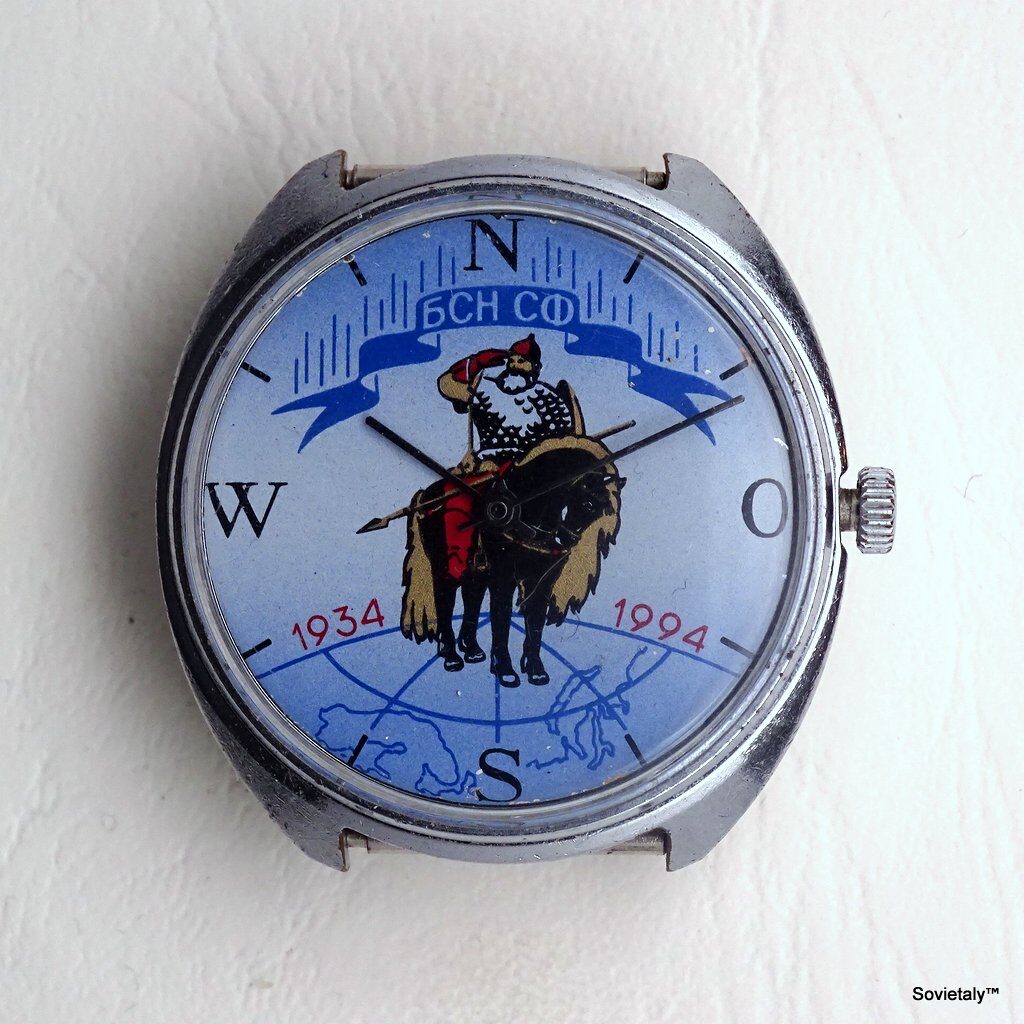Gli orologi commemorativi sovietici sono molto ricercati dai collezionisti, ma spesso si trovano falsi venduti a prezzi elevati. Questo articolo ha l’obiettivo di aiutare i collezionisti a verificare l’autenticità di un orologio Pobeda Lunochod 1 con quadrante nero, utilizzando metodi di analisi dettagliata come la microscopia.
Dettagli Tecnici dell’Orologio Pobeda Lunochod 1
L’orologio Pobeda Lunochod 1, equipaggiato con un movimento meccanico Pobeda 2602, è noto per la sua affidabilità e semplicità. La cassa, solitamente in ottone cromato, ospita lancette argentate per ore, minuti e secondi. Il quadrante nero, che celebra la missione Lunochod 1 del 1970, è decorato con l’immagine del rover sovietico e altre iscrizioni in cirillico.
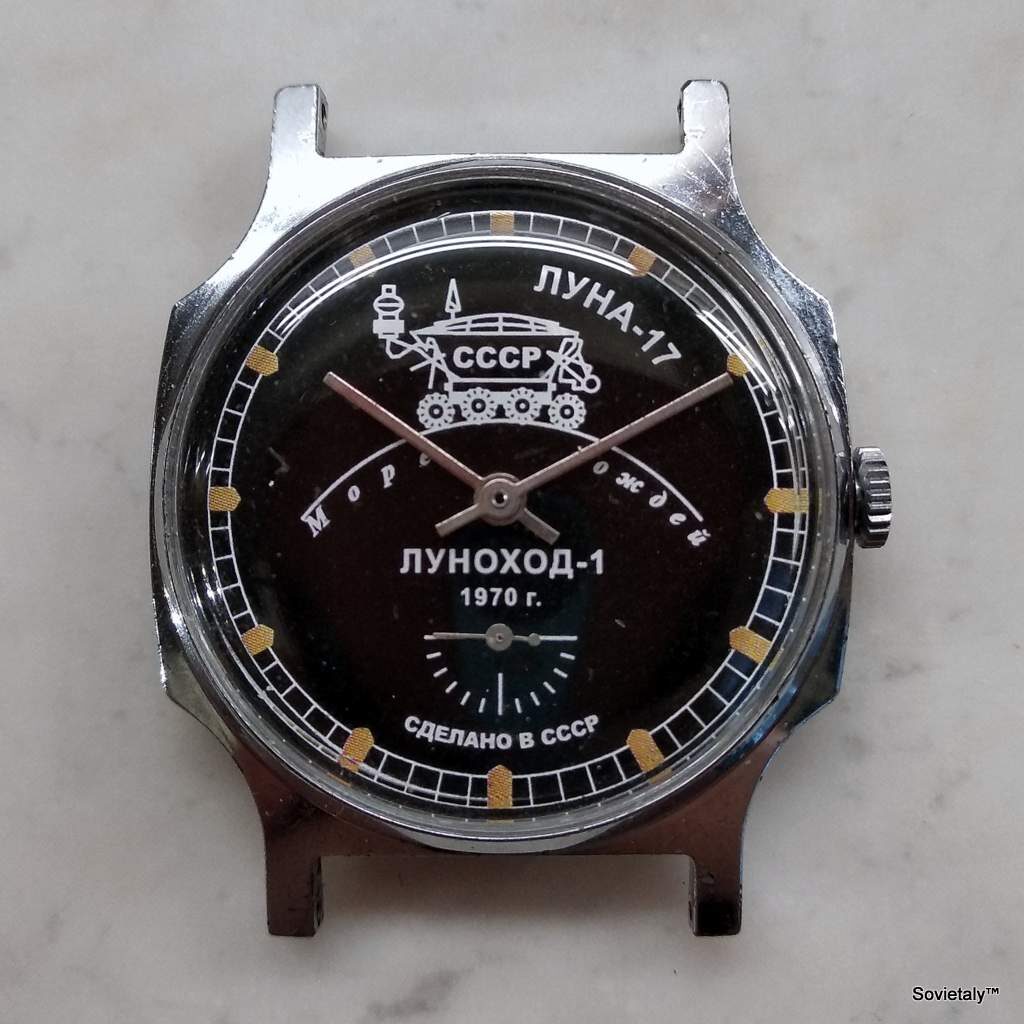
Autenticità del Quadrante: Vero o Falso?
Molti collezionisti si chiedono se il quadrante commemorativo del Pobeda Lunochod 1 sia autentico o un falso. Per rispondere a questa domanda, è necessario analizzare il quadrante con strumenti adeguati, come un microscopio.
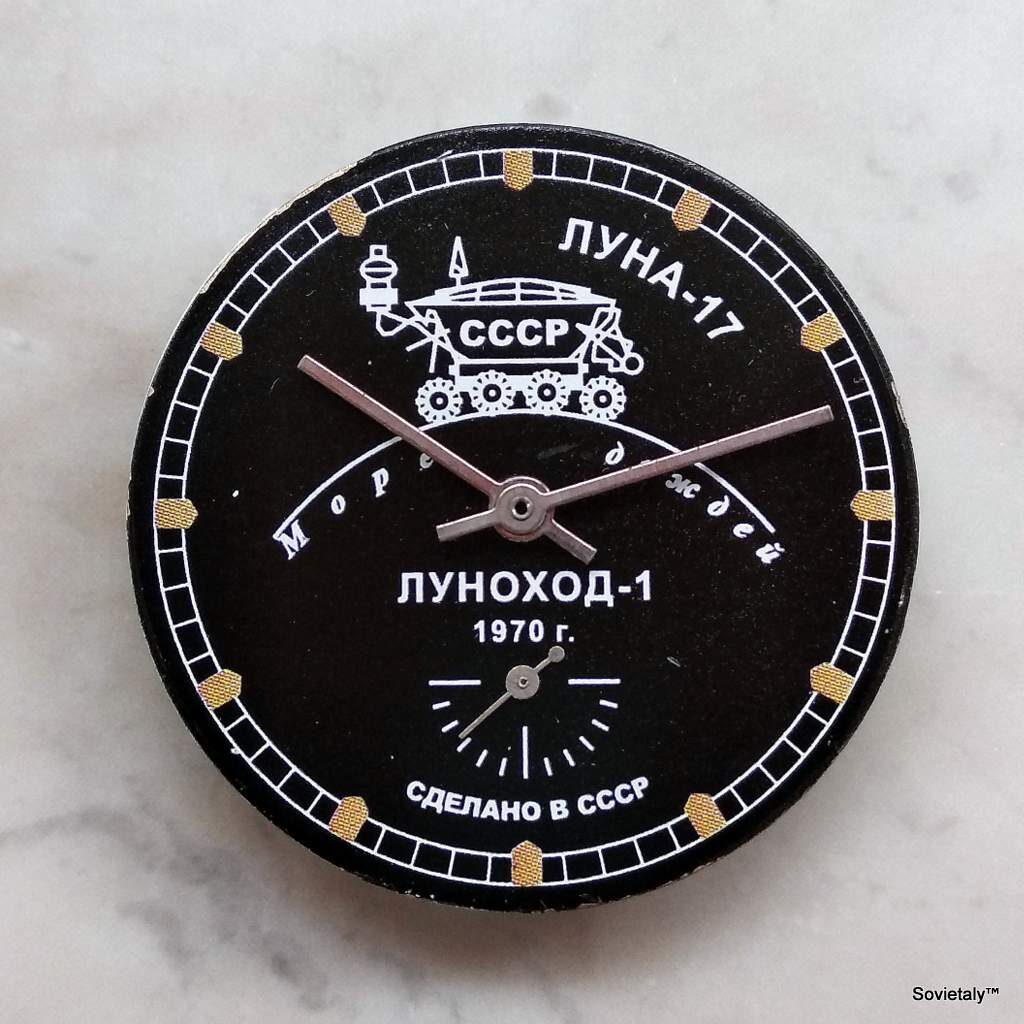
Analisi al Microscopio
Le immagini al microscopio del quadrante nero rivelano dettagli importanti che aiutano a determinare l’autenticità:
- Stampa Moderna: Le immagini mostrano chiaramente che il quadrante è stato stampato con tecniche moderne. Le scritte non sono concentriche e presentano una qualità di stampa a inchiostro, con una mescola dei colori visibile soprattutto sugli indici.
- Assenza di Documentazione: Nei cataloghi sovietici dell’epoca, non vi è traccia di orologi da polso dedicati ai rover Lunochod. Questo suggerisce fortemente che tali quadranti siano stati prodotti successivamente per ingannare i collezionisti.
Dettagli Sospetti
Oltre alla qualità della stampa, ci sono altri indizi che suggeriscono la non autenticità del quadrante:
- Condizioni Perfette: Troppi esemplari in vendita si trovano in condizioni quasi perfette, una caratteristica insolita per orologi prodotti negli anni ’70.
- Disposizione e Colori: Il design del quadrante, con scritte non allineate e colori non tipici dei modelli sovietici autentici, è un ulteriore indizio di falsità.


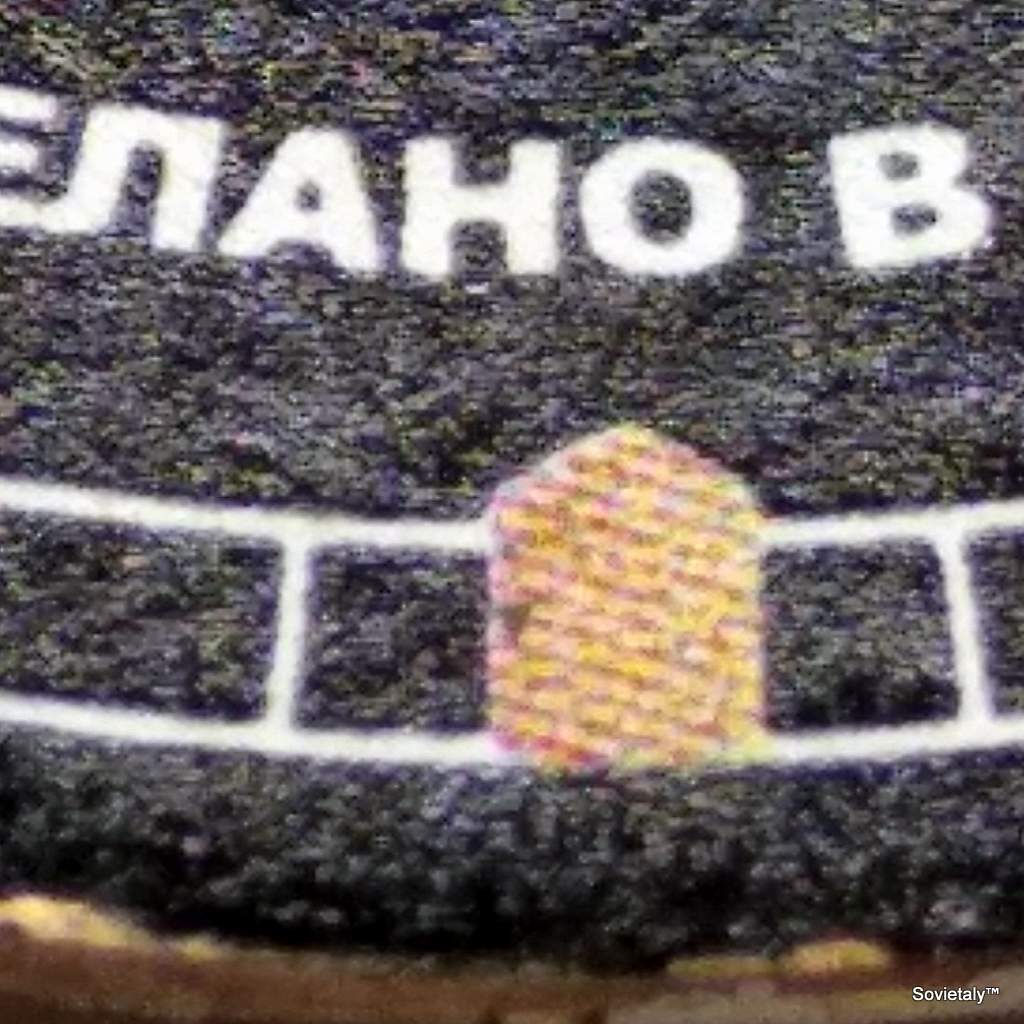
Orologi Commemorativi Lunochod: Una Rarità
Ad oggi, non sono noti orologi da polso autentici commemorativi dei rover Lunochod. Alcuni orologi da tasca sovietici sembrano riprendere questo nome, ma non esistono prove concrete che colleghino questi modelli alle missioni spaziali Lunochod.
Conclusioni
Dopo un’attenta analisi, è chiaro che il quadrante commemorativo del Pobeda Lunochod 1 è un falso. Questa conclusione si basa sull’analisi microscopica della stampa, l’assenza di documentazione ufficiale e altre caratteristiche sospette. Si consiglia ai collezionisti di essere prudenti e di approfondire sempre la verifica dell’autenticità prima di effettuare un acquisto.
Un’Odissea Spaziale: Le Missioni Lunochod
Lunochod 1
Il Lunochod 1 fu il primo rover lunare automatizzato, lanciato dall’Unione Sovietica nel 1970. Questa missione storica esplorò il suolo lunare, inviando dati cruciali sulla composizione del terreno e l’ambiente lunare alla Terra. Alimentato da pannelli solari e dotato di otto ruote motrici indipendenti, il rover percorse una distanza di 10,5 km sulla superficie lunare, contribuendo significativamente alla nostra comprensione della geologia lunare.

Lunochod 2
Lunochod 2, lanciato l’8 gennaio 1973, fu il successore del Lunochod 1. Questo rover era dotato di un sistema di telecontrollo avanzato e di una serie di strumenti scientifici migliorati, tra cui un analizzatore di raggi X, un magnetometro e un sistema di rilevamento delle particelle alfa. Durante la sua missione di quasi cinque mesi, il Lunochod 2 percorse una distanza di 37 km sulla superficie lunare, fornendo dati preziosi sulla composizione del suolo lunare e la resistenza dei materiali alle temperature estreme della Luna.
Scoperte e Contributi del Lunochod 2
Una delle scoperte più significative del Lunochod 2 fu un piccolo cratere che fu successivamente battezzato in suo onore. Le informazioni raccolte dal rover hanno contribuito a una comprensione più approfondita della geologia lunare, influenzando la pianificazione di future missioni spaziali.
Lunochod 3 e Oltre: I Piani Incompiuti
Il Lunochod 3 era stato pianificato per una missione lunare, ma non fu mai lanciato. Il rover è attualmente esposto in un museo a Mosca. Questo rover avrebbe dovuto beneficiare delle lezioni apprese dalle missioni precedenti, ma la sua missione fu annullata a causa di tagli al budget e cambiamenti nelle priorità della politica spaziale sovietica.
Il Quarto Rover: Un Fallimento Precoce
Il primo tentativo di lanciare un rover Lunochod fallì nel 1969 quando il razzo vettore si distrusse poco dopo il decollo. Questo incidente evidenziò le difficoltà tecniche e i rischi associati all’esplorazione spaziale, ma non fermò i successi delle missioni successive.
Risorse per Approfondire
Per chi desidera approfondire la conoscenza sugli orologi sovietici e russi, ecco alcuni link pertinenti e specifici:
- Orologiko: Discussione sull’autenticità dei quadranti commemorativi
- WatchUSeek: Guida per identificare falsi quadranti Pobeda
- Reddit – r/Watches: Discussione sui falsi orologi commemorativi sovietici
- Foro de Relojes: Analisi dettagliata degli orologi commemorativi sovietici
- Watch.ru: Topic dedicato ai quadranti commemorativi Lunochod
- Forumamontres: Discussione sugli orologi commemorativi Lunochod
- Montres Mécaniques: Articolo sui falsi orologi commemorativi sovietici
- UhrForum: Thread sui Pobeda commemorativi falsi

